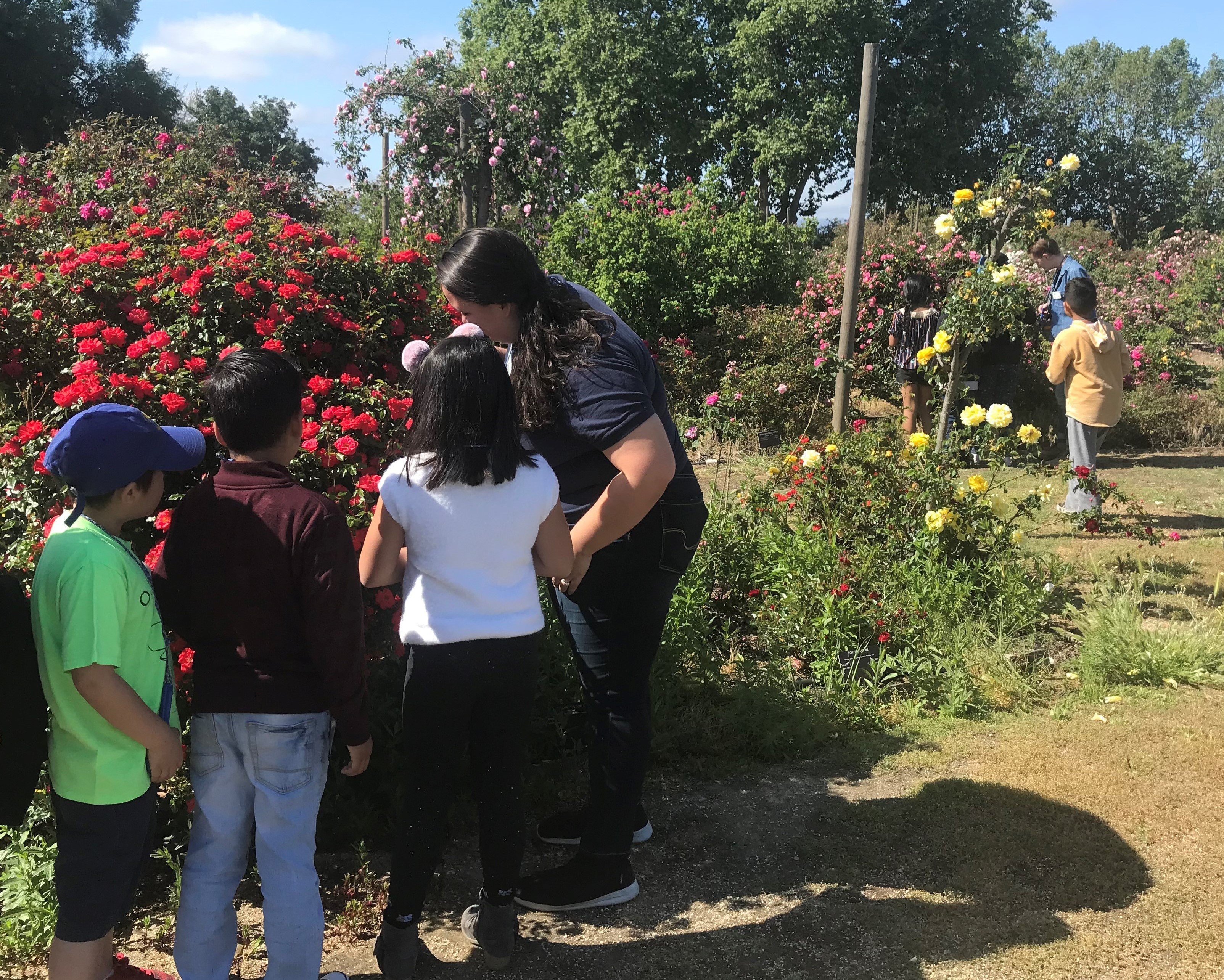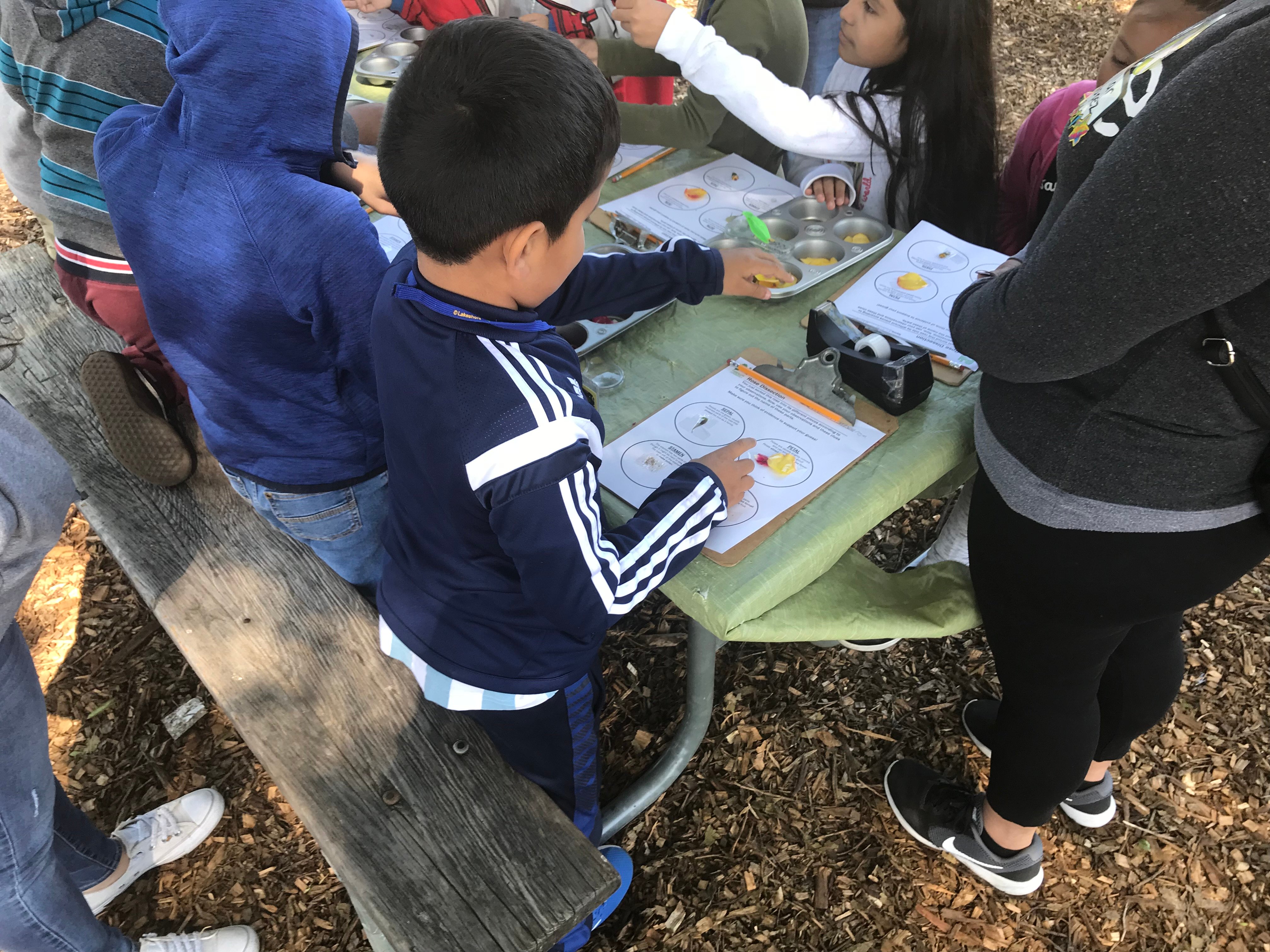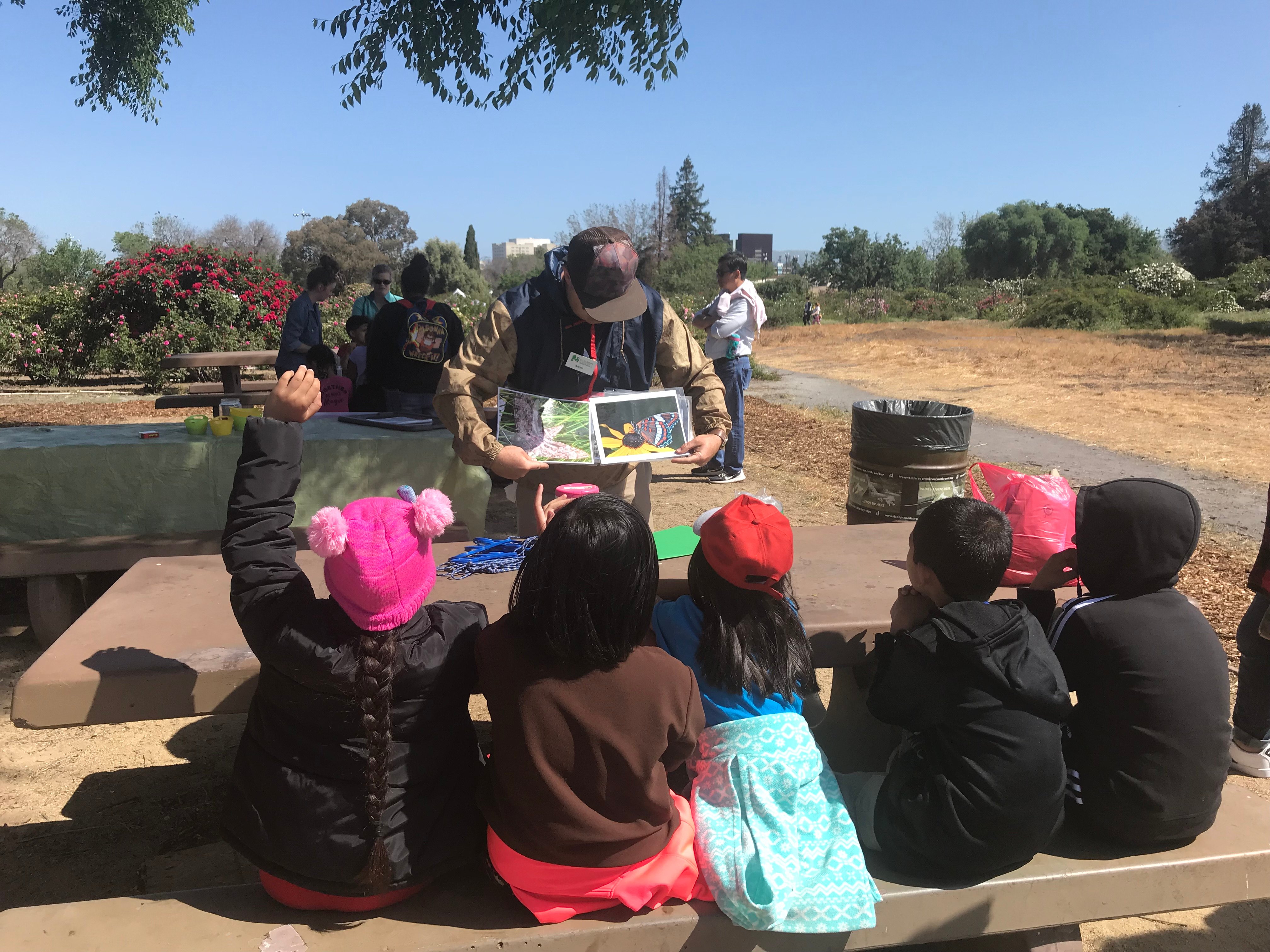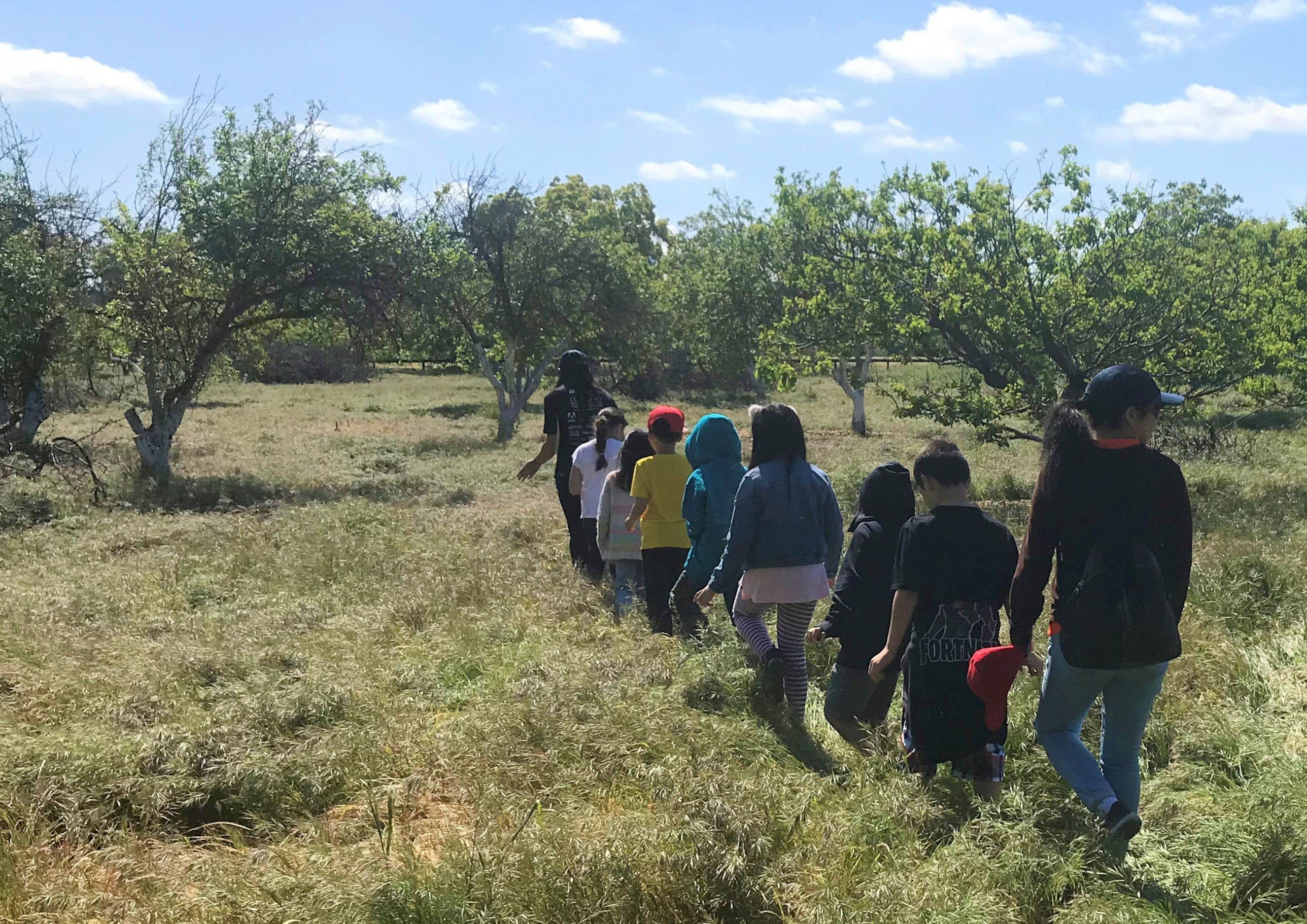“Every day we get to see ‘the awe’ and experience how excited the kids are to be outside”
Hands-on, outdoor educational opportunities encourage students to take active roles in their learning, allowing them to make discoveries in new and exciting ways. But many children, especially those coming from disadvantaged or low-income backgrounds, face obstacles to connecting with nature in educational settings.
For more than a decade, the Guadalupe River Park Conservancy has been introducing local students to nature by leading field trips along Downtown San Jose’s Guadalupe River, and into the park’s landmark rose garden.
Just as the students learn about how species “adapt” to their changing environments, the program has made strides to modify the program year by year, both to meet California’s Next Generation Science Standards, and to use the latest, research-backed methodologies for improving science literacy and critical thinking skills.
With the support of the Open Space Authority’s Measure Q Environmental Education Grant Program, the Guadalupe River Park Conservancy has developed a program where students take an active role in their learning by thinking like a scientist - observing phenomena and then asking questions get to the answers themselves, which is a shift from traditional passive and teacher-led models of learning.

On a recent morning, a group of second graders got develop these observation skills with the program’s hands-on “Pollination Station” game. First, the students put on a pair of gloves covered by soft velcro fibers. Then they reach into a bucket filled with a mix of velcro puffs and slick, golf balls in the bottom. As they were tasked with picking up the golf balls, the velcro puffs stuck to their gloves. After this, they see a close up photo of a bee. One exclaimed, “Oh my gosh, I see the hairs on his head, it’s like the velcro on the glove that catches all the stuff!” After that experience, the students went out to the Rose Garden to observe bees in action, and later, to taste the product of this phenomenon, honey.
The program will serve approximately 3,000 students, mostly coming from urban and underserved districts and Title 1 schools where more than 80-90% of students meet the federal standards for free or reduced price lunch.
“There’s so much that I find rewarding about this program,” said Mel Sarmento, Education Program Manager for the Guadalupe River Parks Conservancy. “Every day we get to see ‘the awe’ and experience how excited the kids are to be outside.”

One morning she went down to the river to observe a student group. She noticed a group of students huddled around a rock. “They said, ‘Look at this rock, do you see it? It’s so pretty!’” They pointed to the various colors and ran their fingers along the edges, tracing the shape.
“They noticed things that most of us would have taken for granted. I’m glad to have the opportunity to help them explore and be amazed.”

